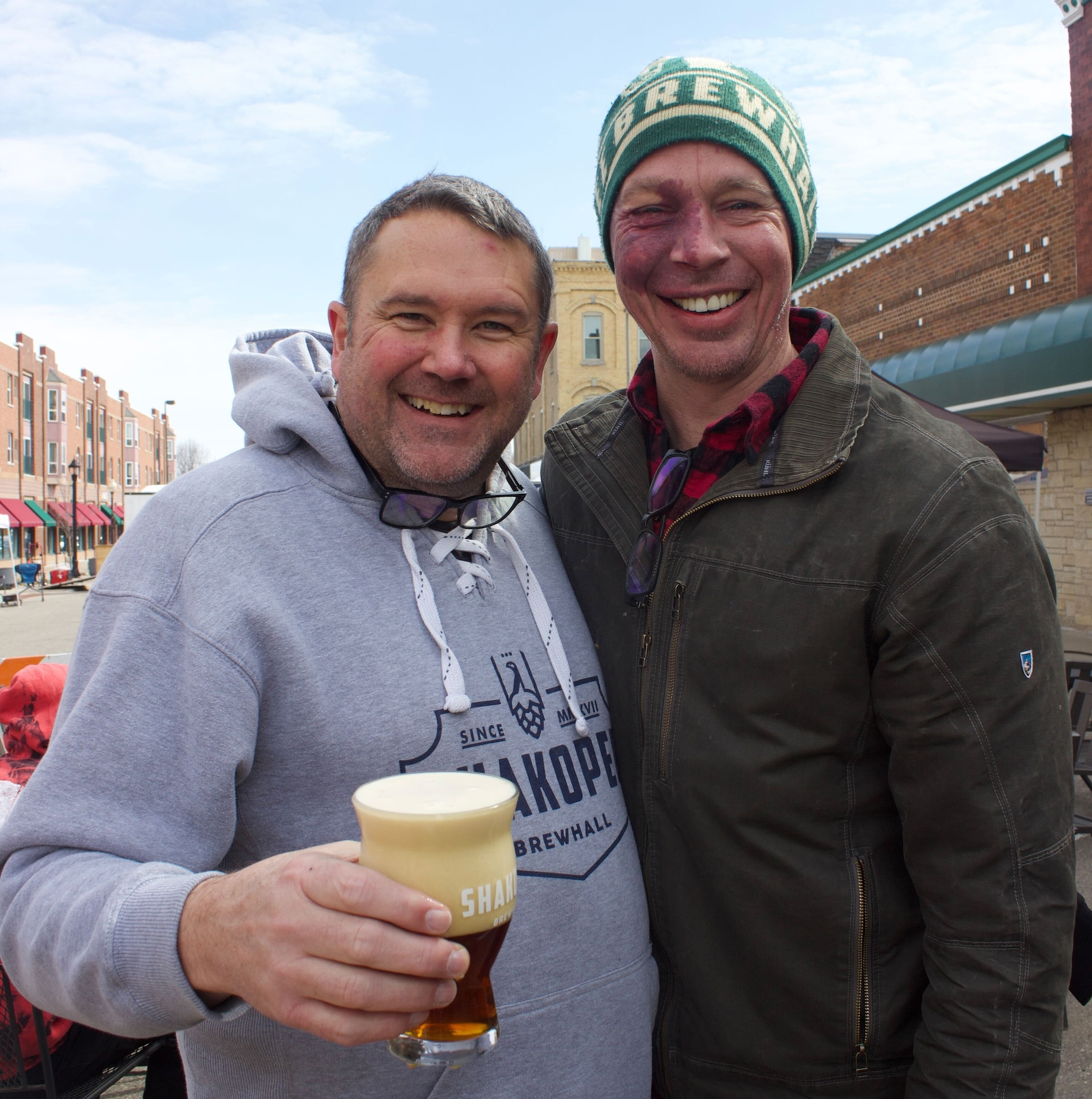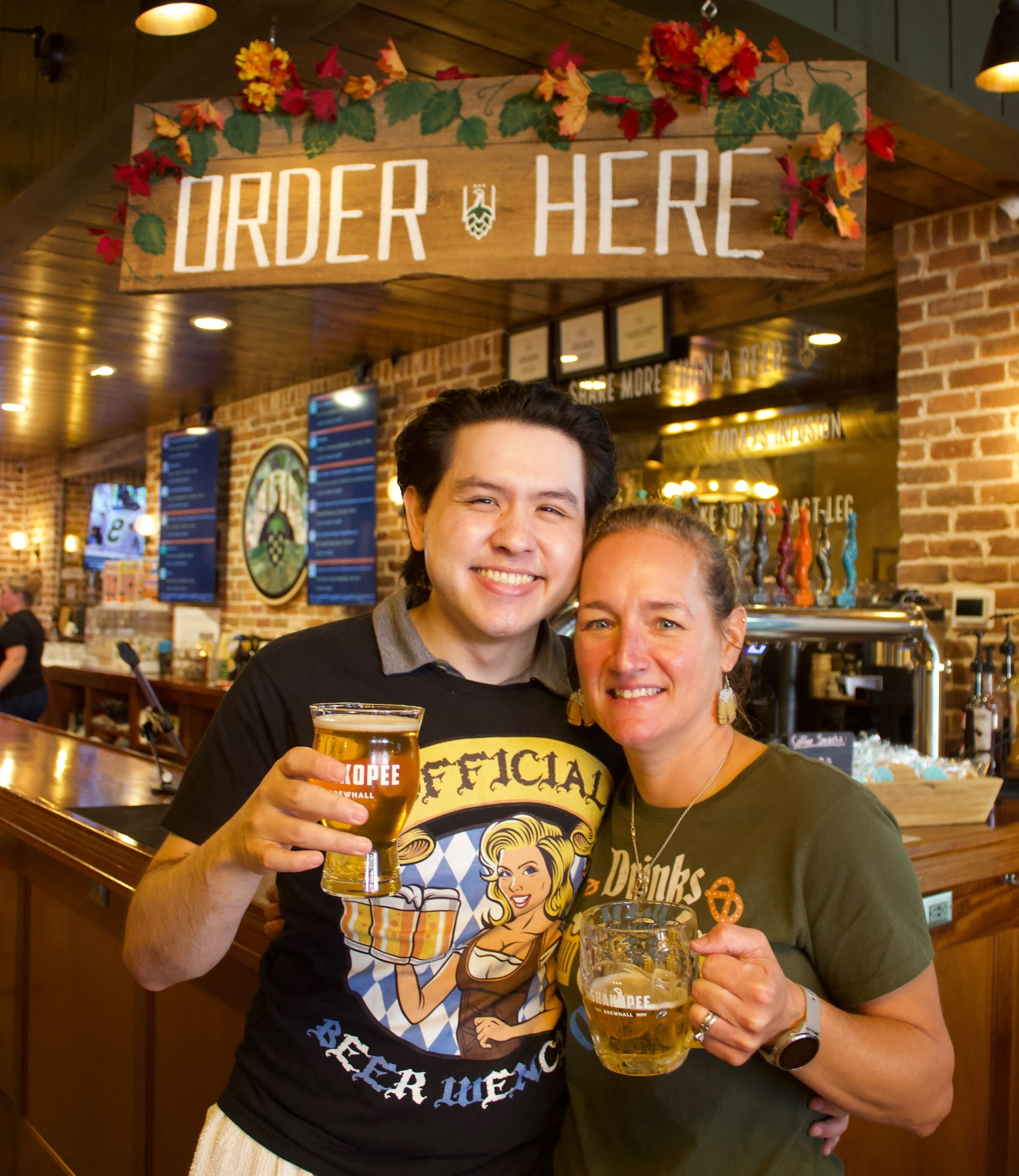Sometimes a small business, to stay relevant or successful, has to make a hard pivot. Minnesota’s Shakopee Brewhall opened in 2018 offering unique craft beers. The brewery still serves beer, but now it opens at 7 a.m. serving coffee and has become a daylong gathering place for a much wider audience.
The pub was founded by Damon Schuler and Ryan Lindquist, friends who brewed beer in their basements. Lindquist worked as an engineer at a medical device company, and Schuler was CFO of the McNally Smith College of Music in St. Paul. The pair started dreaming of what it might look like to turn their recreation into a career. “We just started dabbling with business plans, and it kept evolving,” Lindquist said. “Eventually, our wives got bored of us talking about the idea and told us: ‘Either do it or quit talking about it.’” So they talked with banks and enticed Ben Salyards from another brewery to join as head brewer. They settled on a 107-year-old butcher shop in downtown Shakopee that had been vacant for five years. “We just kind of fell in love with the environment,” Lindquist said.
They opened — and waited for people to come. “I harbored the delusion that we’d be a downtown brewery and people would flock to us,” Lindquist recalled. “Well, they did come, just not in the numbers we expected.” It was a stark lesson on the importance of target audiences and marketing.
In search of a larger audience Lindquist and Schuler shook things up in 2021. They started offering coffee and espresso and expanded their hours to open at 7 a.m. Lindquist was completely against the move. “I didn’t want to do it,” he recalled. “I was like: ‘Damnit, we’re a brewery.’” But sales ticked up 12.8% that first year, and a whole new market discovered the business.
ICSC Small Business Center contributing editor Rebecca Meiser talked to Lindquist about the origin of Shakopee Brewhall, now billed as a taproom and coffee house and lessons he and Schuler learned along the way.

Shakopee Brewhall founders Damon Schuler, left, and Ryan Lindquist, right
How did you decide on the location?
I was just so bullish on wanting to have the Brewhall in a downtown strip. I really didn’t like the idea of being in an industrial park, and I didn’t want a stale metal environment. We also needed a really big space. In the state of Minnesota, you have to brew in the same location where you sell the beer. Our total square footage of the tap room is 4,000 square feet, and so about a third of it is the production area in the back.
What was your goal in opening?
It was just to be repeatedly profitable. But we also wanted the place to be a local watering hole. A place where people could come on in, enjoy a beer and do their work, sort of like an extension of your home.
Were people in Shakopee interested in craft beer?
If you put the microscope over top of the three-block strip of downtown Shakopee, we were surrounded by all these dive bars. I mean dive bars in a loving way, but it’s people that are drinking Pabst and Miller Light and Coors. So there was a culture shock: “Hey, where’s my Coors?” We don’t serve that. Our beer was certainly different than any place else in that area of Shakopee. It evolved to the point that people got curious and came in and checked us out. But at the end of the day, our target market is not the domestic beer drinker, and that’s OK.
Is there anything you would have done differently in choosing your location?
I did not challenge myself enough on the demographics in our area. Shakopee is a lot of single-family, 30- to 60-year-olds. It does not have a university nearby. We don’t have the 20-somethings coming through. It’s husbands and wives, business groups. That equates to more of a responsible drinker: people who have two, two-and-half beers per transaction. It means that we are not open until 2 a.m. because we don’t have the clientele for that. I’ve traveled and I’ve done enough market research to see that if you’re a brewery that’s adjacent to a college, you are going to get the people that are going to probably start having a beer by noon versus punching out [of] work at 4 o’clock and then thinking: “Let’s have dinner at home, and then we’ll go grab a couple of drinks afterwards.” Our sweet spot is 3 to 9 p.m., and I’m happy with where we are. And if were to be dropped next to college, maybe I’d hate it. I don’t know, but as I look on the other side of the fence, I can’t help but wonder.
“You’ve got to expect change, and you really need to welcome it because you can’t just sit in your own ways. You’ve got to really acknowledge and realize what’s going on around you.”
Talk us through your decision to pivot to adding coffee and espresso.
Just before COVID hit, my business partner was really bullish on wanting to open a coffee shop. We were paying rent for this building, but people weren’t coming in to drink until 4 o’clock. So Damon was like: “We’ve got all this space here. What if we look into adding a coffee shop?” I was really against it. I didn’t want to do it. I was like: “Damnit, we’re a brewery.” We opened up this place because we wanted to have a six-second tap pour. I didn’t want to have to dillydally with four-minute coffee drinks and dealing with a new supply chain. It gave me a headache thinking of all those milks — oat and almond — and all these syrups, but we did it anyway. We tiptoed in. We started with drip coffee and cold-press. Simultaneously, we shopped around for a commercial-grade espresso machine.
[The pivot] has been absolutely fantastic. I don’t want to dismiss any other local businesses, but there is only one other coffee shop in Shakopee. Otherwise, it’s the chains like Caribou and Starbucks, but we’re such a nice warm, welcoming environment.
Now we open up our doors at 7 [in the morning], and people come in with their friends and work from the Brewhall. From 7 to noon, people are drinking coffee, and then there’s this rut from noon to 3. We kind of catch our breath, and then from 3 to 9, we have trivia or music or bingo nights and all that kind of stuff that keep people in the seats in the evenings.

John Nguyen and Lisa Evenson serve up Shakopee Brewhall’s craft beers.
Was it hard to make the change?
It was an incredible learning curve for the team. Now, we essentially have a different coffee crew and a beer crew. We essentially got to write a whole new business plan. For four years, we were dillydallying in the market of 21-plus, craft beer drinkers. I remember I had this epiphany: Now we can hit up high schoolers. We can hit up the non-beer drinkers. All of a sudden, we’ve got this wider range and target audience. Now, we have our own unique coffee shop TikTok page. That has been healthy for me, to look at things in a totally different way.
Where do you want to be in five and 10 years?
We’re trying to figure out how to evolve again because, even though it sounds so cliche, you can’t rest. We’ve been fortunate enough to ride this craft beer wave, but younger demographics are drinking less, and — even me, a craft beer enthusiast — I recognize that the demand for craft beer is coming down, whether we like it or not. We’ve started incorporating more nonalcoholic options like seltzer. We’re looking at possibly even getting our coffee out into liquor stores just to try to find new avenues and branches. We’re really at this growing point, trying to figure out where to put our chips right now. And to be totally honest, at some point, I’ve got to sell. I can only play in my sandbox for so long.
What advice do you have for others who are looking to start a small business?
You’ve got to expect change, and you really need to welcome it because you can’t just sit in your own ways. You’ve got to really acknowledge and realize what’s going on around you. It’s also important to remember that you don’t have to have all the answers. You need a good stable foundation, whether that’s your leadership team or other people you can go to for advice, but don’t feel like you have to be the end-all for everything. I’ve learned other people have great ideas, just as much as I have bad ones.
By Rebecca Meiser
Contributor, Commerce + Communities Today